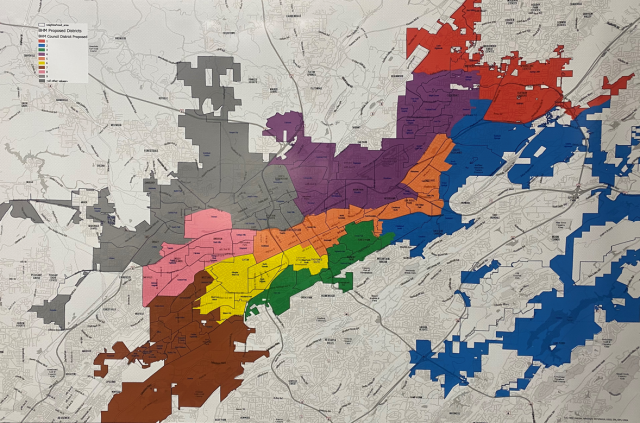By Ryan Michaels
The Birmingham Times
After several meetings and discussion, the Birmingham City Council is set to receive a final version of a new redistricting map outlining council and school board districts.
This week, councilors will meet with consultants one-on-one to discuss a preliminary redistricting map, and soon after, representatives of neighborhoods and the rest of the public will have a chance to comment. The map is expected to be completed Feb. 12.
The councilors have so far met twice to discuss redistricting, first in January and last week.
After each federal census, electoral district boundaries must be redrawn to accurately represent population changes and subsequent demographic information — a process known as “redistricting.”
In Birmingham, the city is sliced into nine “districts,” which are each represented by one person on the City Council and the Board of Education. However, the 99 neighborhoods that make up Birmingham aren’t shaped cleanly within the districts. Some neighborhoods are split across two or more districts.
For example, Five Points South, the most populous neighborhood in Birmingham, is currently split across Districts 3, 5 and 6.
District 3, represented by Councilor Valerie Abbott, encompasses numerous neighborhoods south of downtown, including Highland Park and portions of Glen Iris and East Avondale, among others; district 5, represented by Councilor Darrell O’Quinn, is a long district, which contains numerous neighborhoods in the center of the city, including Druid Hills and Fountain Heights, as well as College Hills and Crestwood North; district 6, represented by Council President Pro Tem Crystal Smitherman, is situated just west of the city center and contains all of the Titusville community, as well as Mason City and portions of neighborhoods like Powderly and Graymont.
However, the shape of those districts and others could change during the redistricting process.
Dr. Kareem Crayton, a redistricting expert who owns Crimcard Consulting, and Birmingham native Doug Turner of consulting firm Censeo, have met with the council at both of its committee meetings to discuss the redrawing of the district lines.
In the January meeting meeting, Crayton laid out the basic guidelines for how he and Turner would redraw Birmingham’s City Council district lines.
The primary guideline for drawing districts is that each district contains about the same number of people. At latest count, the total population of Birmingham is 200,733, meaning each district should contain about 22,304 people.
Another crucial aspect of redistricting is making sure that distinct voting populations have a chance to elect their preferred candidate in each election. For instance, a voting map cannot be drawn such that all people of a particular political party or racial identity are within the same district because it limits their influence on only one district.
Similarly, districts cannot be drawn such that a particular group of people are spread so thin throughout a city that their votes would have no effect in individual districts.





